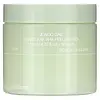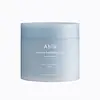What's inside
What's inside
 Key Ingredients
Key Ingredients

 Benefits
Benefits

 Concerns
Concerns

No concerns
 Ingredients Side-by-side
Ingredients Side-by-side

Water
Skin ConditioningDipropylene Glycol
HumectantGlycerin
HumectantButylene Glycol
Humectant1,2-Hexanediol
Skin ConditioningHouttuynia Cordata Extract
Skin ConditioningBetaine
HumectantChamaecyparis Obtusa Water
MaskingBetaine Salicylate
AntimicrobialMadecassoside
AntioxidantAsiaticoside
AntioxidantMadecassic Acid
Skin ConditioningAsiatic Acid
Skin ConditioningPolyglyceryl-10 Laurate
Skin ConditioningArginine
MaskingPolyglyceryl-10 Myristate
Skin ConditioningMelaleuca Alternifolia Leaf Oil
AntioxidantDisodium EDTA
Sodium Hyaluronate
HumectantEthylhexylglycerin
Skin ConditioningChlorphenesin
AntimicrobialLimonene
PerfumingWater, Dipropylene Glycol, Glycerin, Butylene Glycol, 1,2-Hexanediol, Houttuynia Cordata Extract, Betaine, Chamaecyparis Obtusa Water, Betaine Salicylate, Madecassoside, Asiaticoside, Madecassic Acid, Asiatic Acid, Polyglyceryl-10 Laurate, Arginine, Polyglyceryl-10 Myristate, Melaleuca Alternifolia Leaf Oil, Disodium EDTA, Sodium Hyaluronate, Ethylhexylglycerin, Chlorphenesin, Limonene
Water
Skin ConditioningMethylpropanediol
SolventSedum Sarmentosum Extract
HumectantGlycerin
Humectant1,2-Hexanediol
Skin ConditioningPropanediol
SolventSodium Hyaluronate
HumectantCynanchum Atratum Extract
Skin ConditioningAlthaea Rosea Flower Extract
Skin ConditioningHydrolyzed Hyaluronic Acid
HumectantHyaluronic Acid
HumectantDipropylene Glycol
HumectantBetaine
HumectantTrehalose
HumectantSodium Citrate
BufferingAllantoin
Skin ConditioningSuccinic Acid
BufferingGlyceryl Glucoside
HumectantCaprylyl Glycol
EmollientPolyglyceryl-10 Laurate
Skin ConditioningEthylhexylglycerin
Skin ConditioningGluconolactone
Skin ConditioningButylene Glycol
HumectantHydroxyethylcellulose
Emulsion StabilisingPentylene Glycol
Skin ConditioningAcetyl Glucosamine
Skin ConditioningGlucose
HumectantHydroxyacetophenone
AntioxidantPanthenol
Skin ConditioningSorbitol
HumectantBenzyl Glycol
SolventHydrolyzed Glycosaminoglycans
HumectantSodium Hyaluronate Crosspolymer
HumectantHydroxypropyltrimonium Hyaluronate
Dipotassium Phosphate
BufferingAcetyl Glutamine
Skin ConditioningSodium Acetylated Hyaluronate
HumectantCellulose Gum
Emulsion StabilisingCaffeine
Skin ConditioningDisodium EDTA
Xanthan Gum
EmulsifyingWater, Methylpropanediol, Sedum Sarmentosum Extract, Glycerin, 1,2-Hexanediol, Propanediol, Sodium Hyaluronate, Cynanchum Atratum Extract, Althaea Rosea Flower Extract, Hydrolyzed Hyaluronic Acid, Hyaluronic Acid, Dipropylene Glycol, Betaine, Trehalose, Sodium Citrate, Allantoin, Succinic Acid, Glyceryl Glucoside, Caprylyl Glycol, Polyglyceryl-10 Laurate, Ethylhexylglycerin, Gluconolactone, Butylene Glycol, Hydroxyethylcellulose, Pentylene Glycol, Acetyl Glucosamine, Glucose, Hydroxyacetophenone, Panthenol, Sorbitol, Benzyl Glycol, Hydrolyzed Glycosaminoglycans, Sodium Hyaluronate Crosspolymer, Hydroxypropyltrimonium Hyaluronate, Dipotassium Phosphate, Acetyl Glutamine, Sodium Acetylated Hyaluronate, Cellulose Gum, Caffeine, Disodium EDTA, Xanthan Gum
 Reviews
Reviews

Ingredients Explained
These ingredients are found in both products.
Ingredients higher up in an ingredient list are typically present in a larger amount.
1,2-Hexanediol is a synthetic liquid and another multi-functional powerhouse.
It is a:
- Humectant, drawing moisture into the skin
- Emollient, helping to soften skin
- Solvent, dispersing and stabilizing formulas
- Preservative booster, enhancing the antimicrobial activity of other preservatives
Betaine is a common humectant (a substance that promotes retention of moisture). It's known to be gentle on the skin and can help balance hydration.
This ingredient is best for improving hydration and soothing irritated skin. Studies also show it helps even out skin tone.
Fun fact: Betaine is naturally created in the skin and body. The kind found within cosmetic products can be either plant-derived or synthetic.
Another name for betaine is trimethylglycine.
Learn more about BetaineButylene Glycol (or BG) is used within cosmetic products for a few different reasons:
Overall, Butylene Glycol is a safe and well-rounded ingredient that works well with other ingredients.
Though this ingredient works well with most skin types, some people with sensitive skin may experience a reaction such as allergic rashes, closed comedones, or itchiness.
Learn more about Butylene GlycolDipropylene Glycol is a synthetically created humectant, stabilizer, and solvent.
This ingredient helps:
Dipropylene glycol is technically an alcohol, but it belongs to the glycol family (often considered part of the ‘good’ alcohols). This means it is hydrating and gentle on skin unlike drying solvent alcohols like denatured alcohol.
As a masking agent, Dipropylene Glycol can be used to cover the smell of other ingredients. However, it does not have a scent.
Studies show Dipropylene Glycol is considered safe to use in skincare.
Learn more about Dipropylene GlycolDisodium EDTA plays a role in making products more stable by aiding other preservatives.
It is a chelating agent, meaning it neutralizes metal ions that may be found in a product.
Disodium EDTA is a salt of edetic acid and is found to be safe in cosmetic ingredients.
Learn more about Disodium EDTAEthylhexylglycerin (we can't pronounce this either) is commonly used as a preservative and skin softener. It is derived from glyceryl.
You might see Ethylhexylglycerin often paired with other preservatives such as phenoxyethanol. Ethylhexylglycerin has been found to increase the effectiveness of these other preservatives.
Glycerin is already naturally found in your skin. It helps moisturize and protect your skin.
A study from 2016 found glycerin to be more effective as a humectant than AHAs and hyaluronic acid.
As a humectant, it helps the skin stay hydrated by pulling moisture to your skin. The low molecular weight of glycerin allows it to pull moisture into the deeper layers of your skin.
Hydrated skin improves your skin barrier; Your skin barrier helps protect against irritants and bacteria.
Glycerin has also been found to have antimicrobial and antiviral properties. Due to these properties, glycerin is often used in wound and burn treatments.
In cosmetics, glycerin is usually derived from plants such as soybean or palm. However, it can also be sourced from animals, such as tallow or animal fat.
This ingredient is organic, colorless, odorless, and non-toxic.
Glycerin is the name for this ingredient in American English. British English uses Glycerol/Glycerine.
Learn more about GlycerinPolyglyceryl-10 Laurate is an ester of lauric acid and Polyglycerin-10.
Polyglyceryl-10 Laurate is a cleansing agent and emulsifier. It helps gather dirt, oil, and other pollutants to be rinsed away. As an emulsifier, it helps prevent ingredients from separating, such as oil and water.
Polyglyceryl-10 Laurate may not be fungal acne safe.
Learn more about Polyglyceryl-10 LaurateSodium Hyaluronate is hyaluronic acid's salt form. It is commonly derived from the sodium salt of hyaluronic acid.
Like hyaluronic acid, it is great at holding water and acts as a humectant. This makes it a great skin hydrating ingredient.
Sodium Hyaluronate is naturally occurring in our bodies and is mostly found in eye fluid and joints.
These are some other common types of Hyaluronic Acid:
Learn more about Sodium HyaluronateWater. It's the most common cosmetic ingredient of all. You'll usually see it at the top of ingredient lists, meaning that it makes up the largest part of the product.
So why is it so popular? Water most often acts as a solvent - this means that it helps dissolve other ingredients into the formulation.
You'll also recognize water as that liquid we all need to stay alive. If you see this, drink a glass of water. Stay hydrated!
Learn more about Water